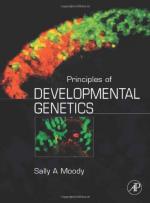|
This section contains 863 words (approx. 3 pages at 300 words per page) |

|
Within a given taxon, development generally results in the production of individuals that are recognizable as members of that specific group. Vertebrate embryos can be recognized as such early in development, regardless of whether they will later become fish, birds, or mammals. Humans nearly always have the same number of fingers and toes at birth (rare exceptions do exist, however), and, although there are slight variations in the size and shape of digits and limbs from one individual to the next, they are recognizable as human features (for example, wings, hooves, and fins never appear in humans). Normal development seems to follow the same pathway, and resulting variation is limited. This is because developmental constraints favor certain outcomes and prevent others. Developmental constraints are any aspects of a developmental system that increase the probability of a particular outcome and limit the production...
|
This section contains 863 words (approx. 3 pages at 300 words per page) |

|


